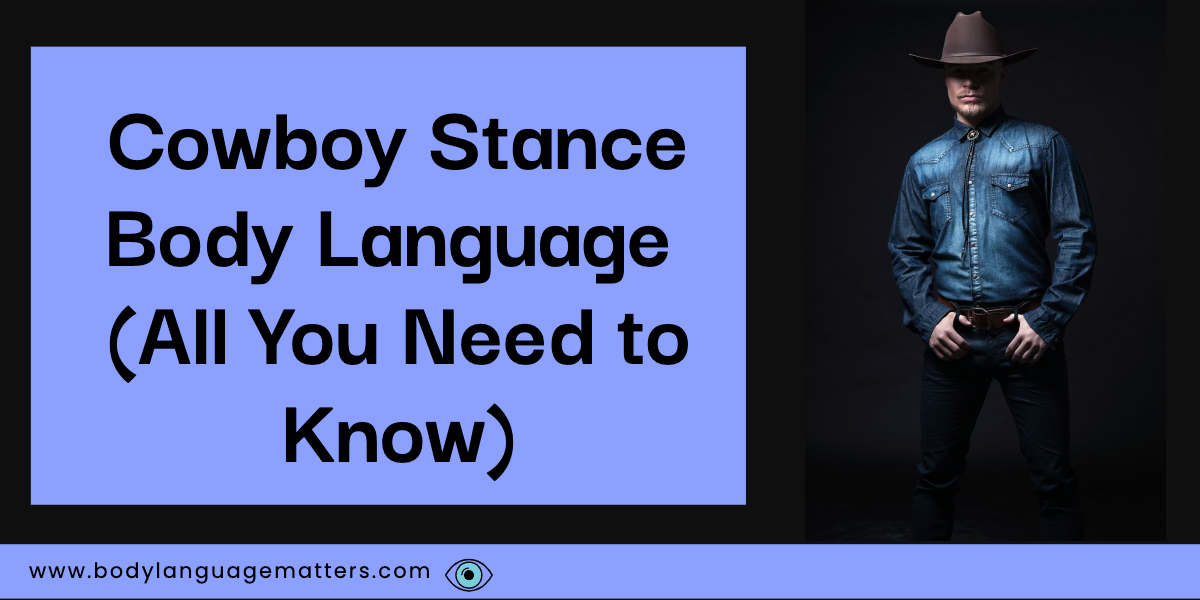Understanding the cowboy stance in body language is important people will adopt this behavior natural without ever paying too much attention to why they are doing it. We will take a look at why people stand this way and how we can use this to our advantage. So what is the cowboy stance?
What is the cowboy stance?
The cowboy stance is a body language power move that can be used to show dominance. It is often used in business negotiations and sales. The person who adopts this stance will stand with their feet apart and their hands on their hips.
This posture is intended to make the individual seem larger than they are, and more intimidating. This can be achieved by adopting a wide-legged position, making oneself appear taller than they actually are, while also placing one’s hands on the hips to add width to the torso.
When you see someone with their feet spread apart and their hands on their hips, you’re seeing the cowboy stance. This is a very common posture that people take when they want to appear strong, confident, and in control.
Who Uses The Cowboy Stance?
The cowboy stance is often used by politicians and other public figures when they want to convey these qualities. While the cowboy stance can be an effective way to communicate confidence, it’s important to be aware that it can also come across as arrogant or aggressive.
If you use the cowboy stance, be sure to do so with confidence and in a way that conveys your positive intentions.
Describe the cowboy stance.
The cowboy stance is a sequence of actions predominantly used by males to assert dominance. For example, it can be implemented with the thumbs at belt height or in the belt and the hands framing their genitals.
The body language gesture happens by placing the thumbs behind the belt loop or waistband with the fingers pointing or hanging toward the crotch area. This is typically a male nonverbal gesture.
Where do you see the cowboy stance body language and in what context?
The cowboy stance can be used in negotiations, interviews, job talks, and presentations to project confidence, control, or dominance. You will often see police officers, security guards, or high-ranking military officers use this stance.
How to use the cowboy stance body language cue.
This stance is often used by people who want to appear confident or dominant as it makes them appear in control and not scared to show off their vulnerable parts of the body.
It’s also useful for showing control over an area, such as when a police officer stands this way at a crime scene to show he’s in charge, not scared and ready for action.
If you really want to use this body language cue, you should try to avoid using it in order to not draw attention to areas that they want fewer people looking at.
What should we avoid doing when using the cowboy stance?
We should refrain from using the cowboy stance when there are clear, higher-level structures in place, such as a workplace, military, or around police officers. This can lead to conflict and emotional reactions from both parties and can lead to negative effects.
Questions And Answers.
1. What does the cowboy stance say about a person’s confidence?
The cowboy stance is a wide and stable stance, which indicates that the person is confident and capable. This stance is often used when facing an opponent or challenge, as it conveys a sense of readiness and strength.
2. How can you use the cowboy stance to convey authority?
The cowboy stance is a way of standing that is often used to convey authority. It involves standing with your feet apart and your hands on your hips. This stance displays a sensitive area for males and shows their dominance.
3. What are some other benefits of using the cowboy stance?
There are other benefits to using the cowboy stance beyond improved accuracy and decreased recoil. These benefits include increased stability and improved dominance feeling and displaying the person is not nervous or worried about anyone or anything, they are in control of the area.
4. What does Thumbs tucked into pants mean?
This is a sign of trustworthiness, power, and authority. It can also be a sign of arrogance.
Summary
The cowboy stance in body language is definitely a power display, but it can be misinterpreted and misused by some people, who might interpret it as arrogance or slyness.
If you are in a power position or want to display a dominant role over people, then you should use this body language cue, but be mindful of your situation before you do so. If you have enjoyed reading this article then please check out others here.

